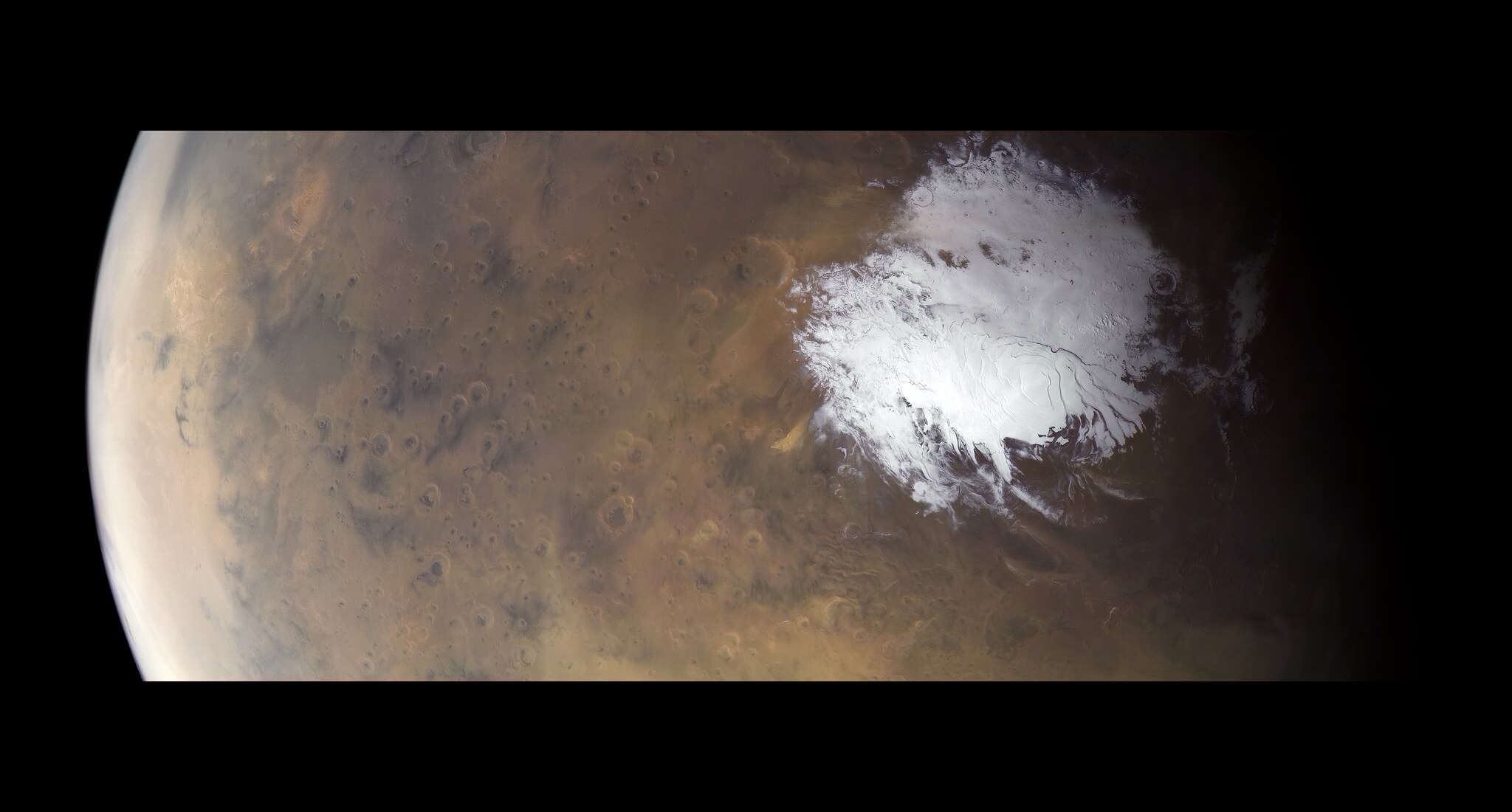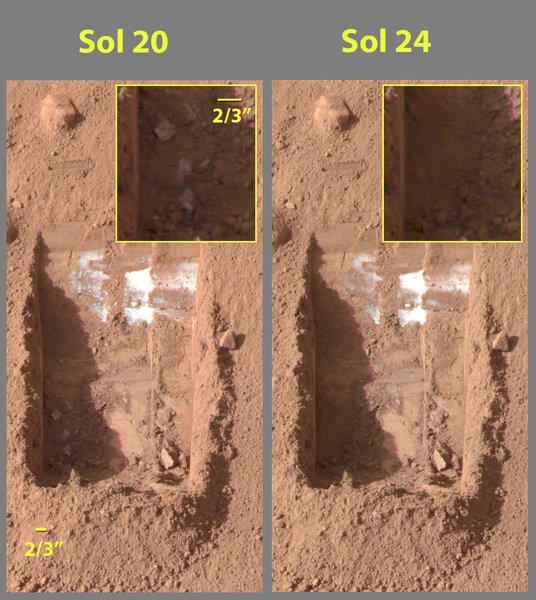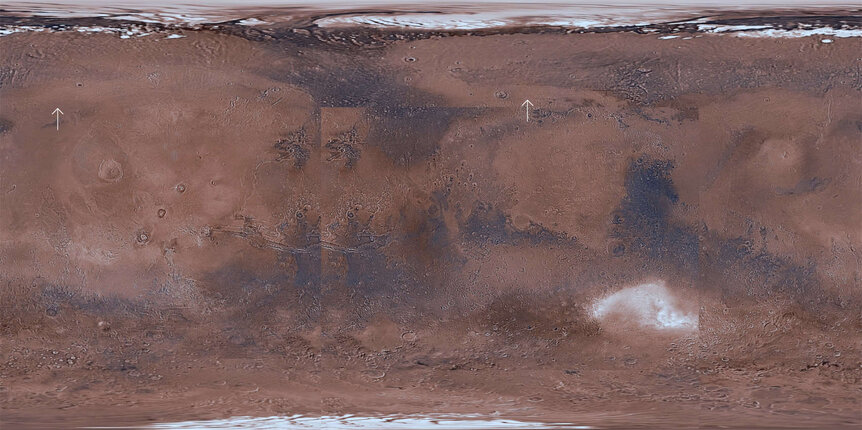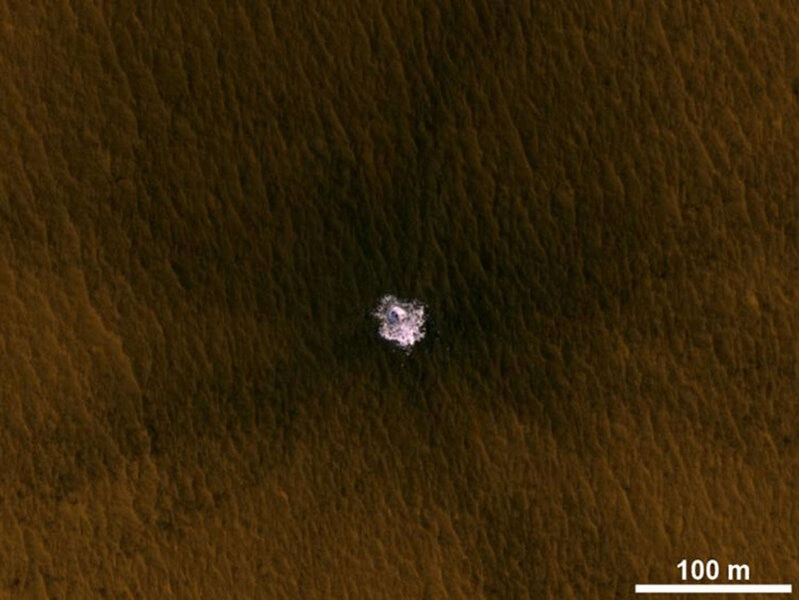Create a free profile to get unlimited access to exclusive videos, sweepstakes, and more!
Here are the best places to find ice on Mars

So you want to go live on Mars. It's smaller than Earth, but still has a lot of real estate. Where's the best place to call home?
NASA's mantra has been to follow the water — they're looking for evidence of past life, but for once and future humans, it's still a good idea. Water is heavy and nearly incompressible, so it's very difficult and expensive to take with you to Mars. That means finding it in situ, there on Mars, is critical for success. Also, water isn't just for drinking: It can be broken down into hydrogen and oxygen both to make breathable air as well as rocket fuel. It's the single most valuable thing to a future human presence on the planet.
And now a team of scientists has mapped out the most likely place for it to be.
Mars is cold — a daily high temperature of -60° C is common — so any water is likely to be ice (with some deep exceptions). Frozen water has been mapped in different ways by different missions, and most research has concentrated on either data from a single mission or ice in isolated spots. So the team put together what they call SWIM: the Mars Subsurface Water Ice Mapping project, to look at the data from many missions over a wide ranging area of the planet.
The goal was to create a system that can quantify the consistency of multiple independent observations so that they can make a robust prediction of where that water is. Mind you, we know there's quite a bit locked up in the polar ice caps, but those are difficult to reach by spacecraft — landing requirements make it far easier to land near the equator or in mid-latitudes. Also, the ice can't be more than a few meters deep, so that it's possible to dig it up. In other words, it needs to be accessible.
Given that, they looked at observations that stretched from the equator of Mars up to about 60° north, and around the planet covering about 80% of the surface in longitude. The data were obtained by various methods, including neutron flux (these subatomic particles are absorbed by the hydrogen in water, so their prevalence can be used to map the locations of ice), thermal inertia (at night, rocks release heat built up during the day in a different way than water ice, so that can be used to map where water is), geomorphology (structures and features on the surface indicating water is nearby, like glaciers), and radar (water ice and rock reflect radar pulses differently, again allowing water to be mapped).
Applying a mathematical algorithm to the data, they came up with a number that they call ice consistency, where a positive value is consistent with the presence of ice, and a negative value inconsistent with it. Higher values mean stronger results.
The result: a map where accessible ice is likely to exist (and, importantly, likely not to exist) over a wide swatch of the Martian surface.
The places that have the highest values are in Arcadia Planitia, a broad, smooth plain of ancient volcanic flows, and another region called Deuteronilus Mensae which is known to have glaciers. Both are located in mid-latitudes (around 45° north) so are relatively easy to access.
To evaluate their predictions, one thing the team did was look at fresh impacts on the surface, where small asteroids were able to get through the thin air and smack into the ground. If ice is located just below the surface those impacts can excavate it, making it pretty obvious. Over the past few years, cameras on board orbiting spacecraft have found 13 such craters. The team found that of those, 12 were located where their maps predicted ice to exist at high confidence. That's reassuring.
NASA, other space agencies, and even private companies are looking to send people to Mars. I imagine they'll be reading this paper with very keen interest.
Technology is progressing rapidly, and a human setting foot on Mars isn't as much sci-fi as it used to be. The first person to do so may already be walking around on Earth. And now we can realistically begin planning where that first bootprint may be.





























